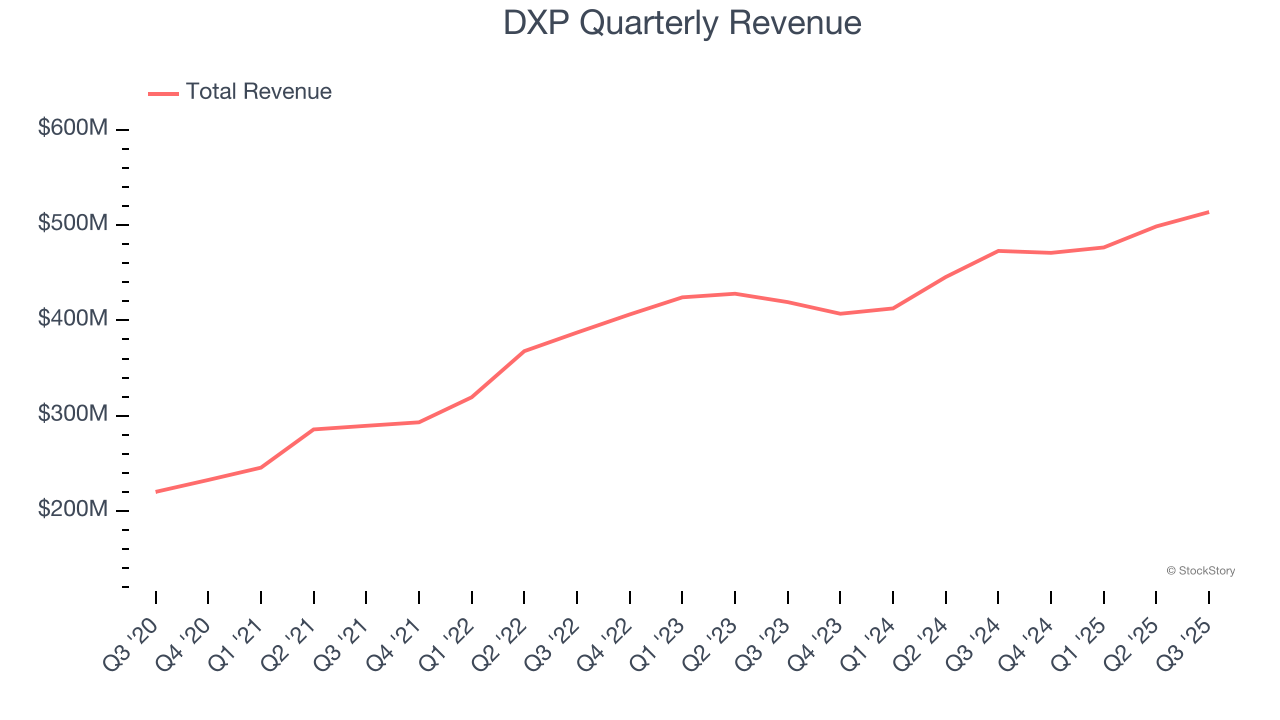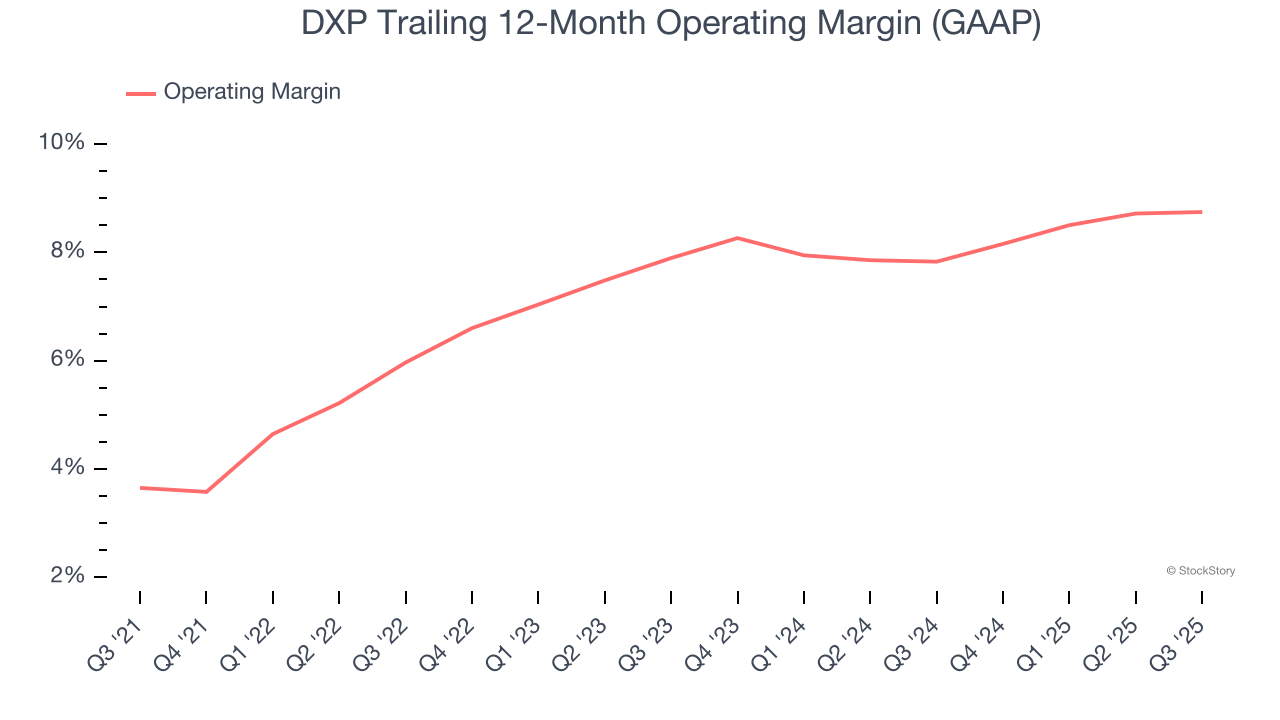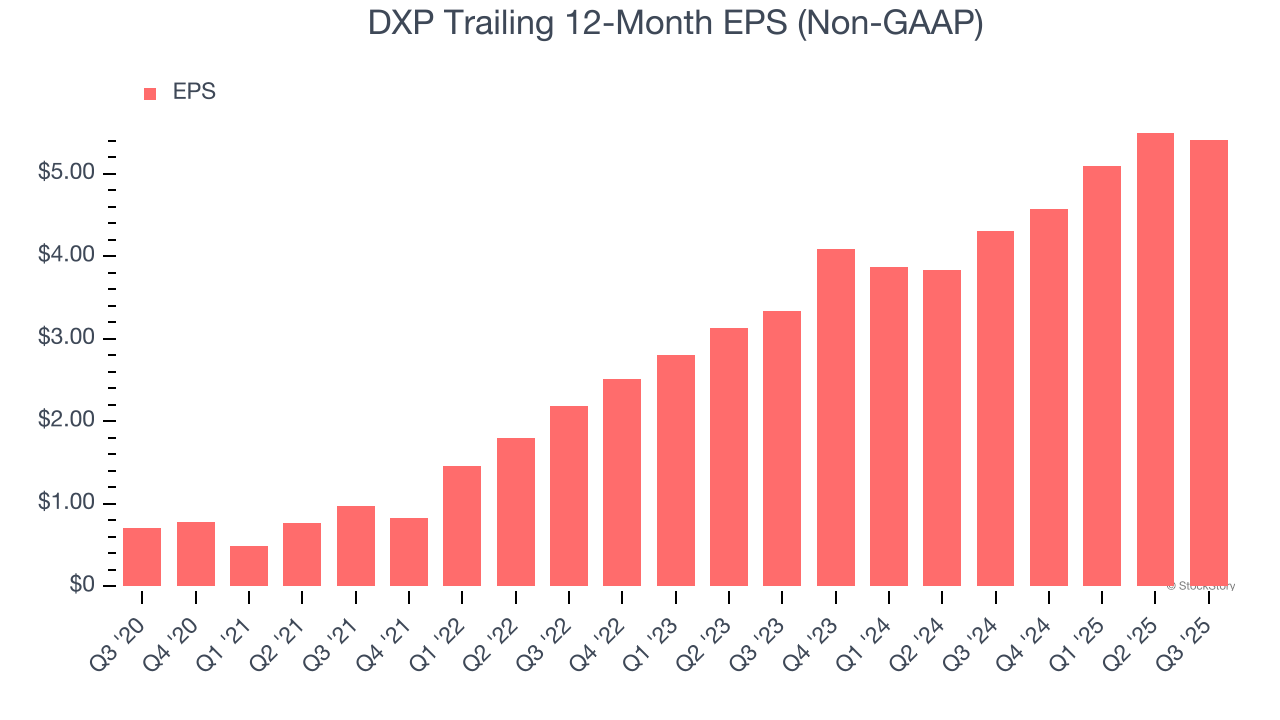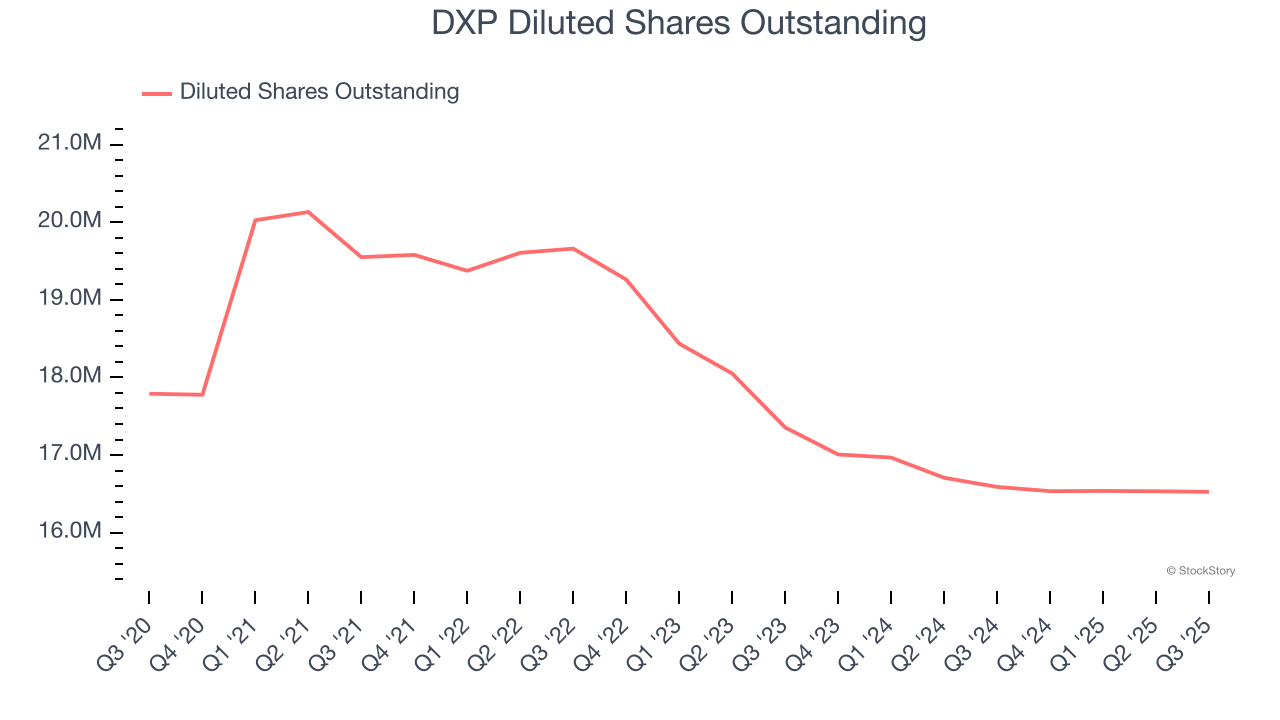
Industrial distributor DXP Enterprises (NASDAQ: DXPE) announced better-than-expected revenue in Q3 CY2025, with sales up 8.6% year on year to $513.7 million. Its non-GAAP profit of $1.34 per share was 14.4% below analysts’ consensus estimates.
Is now the time to buy DXP? Find out by accessing our full research report, it’s free for active Edge members.
DXP (DXPE) Q3 CY2025 Highlights:
- Revenue: $513.7 million vs analyst estimates of $498.8 million (8.6% year-on-year growth, 3% beat)
- Adjusted EPS: $1.34 vs analyst expectations of $1.57 (14.4% miss)
- Adjusted EBITDA: $56.5 million vs analyst estimates of $54.7 million (11% margin, 3.3% beat)
- Operating Margin: 8.5%, in line with the same quarter last year
- Free Cash Flow Margin: 5.5%, similar to the same quarter last year
- Market Capitalization: $1.91 billion
David R. Little, Chairman and Chief Executive Officer commented, "The Company posted excellent third quarter financial results, delivering solid sales, adjusted EBITDA, earnings per share and free cash flow. Third quarter results reflect the continued execution of our growth strategy. We continue to set new high watermarks as DXPeople. We are pleased with our sequential sales growth. This resulted in operating leverage that produced diluted earnings per share of $1.31. DXP’s fiscal year 2025 third quarter sales were $513.7 million, or an 8.6 percent growth over the same period in 2024. Adjusted EBITDA was $56.5 million in the quarter. During the third quarter of 2025, sales were $350.2 million for Service Centers, $100.6 million for Innovative Pumping Solutions, and $63.0 million for Supply Chain Services. Overall, we are very pleased with our performance and the progress DXP continues to make as a growth company. "
Company Overview
Founded during the emergence of Big Oil in Texas, DXP (NASDAQ: DXPE) provides pumps, valves, and other industrial components.
Revenue Growth
Reviewing a company’s long-term sales performance reveals insights into its quality. Any business can put up a good quarter or two, but many enduring ones grow for years. Thankfully, DXP’s 13% annualized revenue growth over the last five years was excellent. Its growth beat the average industrials company and shows its offerings resonate with customers, a helpful starting point for our analysis.

We at StockStory place the most emphasis on long-term growth, but within industrials, a half-decade historical view may miss cycles, industry trends, or a company capitalizing on catalysts such as a new contract win or a successful product line. DXP’s annualized revenue growth of 8.1% over the last two years is below its five-year trend, but we still think the results were respectable. 
This quarter, DXP reported year-on-year revenue growth of 8.6%, and its $513.7 million of revenue exceeded Wall Street’s estimates by 3%.
Looking ahead, sell-side analysts expect revenue to grow 4.7% over the next 12 months, a deceleration versus the last two years. This projection doesn't excite us and suggests its products and services will face some demand challenges. At least the company is tracking well in other measures of financial health.
The 1999 book Gorilla Game predicted Microsoft and Apple would dominate tech before it happened. Its thesis? Identify the platform winners early. Today, enterprise software companies embedding generative AI are becoming the new gorillas. a profitable, fast-growing enterprise software stock that is already riding the automation wave and looking to catch the generative AI next.
Operating Margin
DXP was profitable over the last five years but held back by its large cost base. Its average operating margin of 7.2% was weak for an industrials business.
On the plus side, DXP’s operating margin rose by 5.1 percentage points over the last five years, as its sales growth gave it immense operating leverage.

This quarter, DXP generated an operating margin profit margin of 8.5%, in line with the same quarter last year. This indicates the company’s cost structure has recently been stable.
Earnings Per Share
Revenue trends explain a company’s historical growth, but the long-term change in earnings per share (EPS) points to the profitability of that growth – for example, a company could inflate its sales through excessive spending on advertising and promotions.
DXP’s EPS grew at an astounding 50.1% compounded annual growth rate over the last five years, higher than its 13% annualized revenue growth. This tells us the company became more profitable on a per-share basis as it expanded.

We can take a deeper look into DXP’s earnings quality to better understand the drivers of its performance. As we mentioned earlier, DXP’s operating margin was flat this quarter but expanded by 5.1 percentage points over the last five years. On top of that, its share count shrank by 7.1%. These are positive signs for shareholders because improving profitability and share buybacks turbocharge EPS growth relative to revenue growth. 
Like with revenue, we analyze EPS over a more recent period because it can provide insight into an emerging theme or development for the business.
For DXP, its two-year annual EPS growth of 27.4% was lower than its five-year trend. We still think its growth was good and hope it can accelerate in the future.
In Q3, DXP reported adjusted EPS of $1.34, down from $1.43 in the same quarter last year. This print missed analysts’ estimates, but we care more about long-term adjusted EPS growth than short-term movements. Over the next 12 months, Wall Street expects DXP’s full-year EPS of $5.41 to grow 22.1%.
Key Takeaways from DXP’s Q3 Results
We enjoyed seeing DXP beat analysts’ revenue expectations this quarter. We were also happy its EBITDA outperformed Wall Street’s estimates. On the other hand, its EPS missed. Zooming out, we think this was a mixed quarter. The stock remained flat at $122.08 immediately after reporting.
Should you buy the stock or not? If you’re making that decision, you should consider the bigger picture of valuation, business qualities, as well as the latest earnings. We cover that in our actionable full research report which you can read here, it’s free for active Edge members.




